Monthly Archives: June 2023
Like it or not, Gen Z’s decisions are already changing the sports landscape
The group that could "swipe before they could wipe" is growing up, and they're poised to change the landscape of pro sports fandom.
Gen Zers are now a vital group of consumers. As they enter the workforce, their spending habits and cultural sway are making them game changers in a number of areas, notably sports and media. While the sports fans of yesteryear were once content to wear a jersey, sit in front of a TV, and watch the game, Gen Zers are demanding more, and they're forcing industry executives to come up with a new game plan.
"Reaching Gen Z - and Gen Alpha - should be a point of concern for every single senior sports executive across teams, leagues, media companies, federations, brands, you name it. If you're a key stakeholder in the industry, this is probably something that you should be focusing on … especially when you see some of the data," said Mark J. Burns, a senior sports reporter at the business intelligence firm Morning Consult, which has surveyed Gen Zers to better understand their sports preferences.
Professional sports' revenue and franchise values have exploded in this century, and the industry is not in danger of going extinct - yet. The value of the North American sports market is projected to surpass $83 billion in 2023. But Burns found that one major challenge executives will have to navigate in the coming years is pleasing the whims of Gen Z, who don't pledge their fandom easily.
Unlike their elders, Gen Z consumes sports much differently. It's no secret that the rise of cord-cutting has disrupted the sports-viewing landscape - fracturing the TV industry's one-stop shop on cable and satellite. A tangle of licensing agreements, regional restrictions, and exclusive broadcasting rights has limited the variety and accessibility of sports options on streaming platforms. This has resulted in a fragmented viewership and increased frustration for sports fans. Streaming services, which are moving toward sports programming to increase their subscriber bases, are costly, and the sheer number of them can deter some fans.
"Gen Zers are consuming sports less than U.S. adults, and in a different way," Burns said. What it ultimately comes down to is that everything isn't in one place like it used to be, and people aren't willing to sign up for every streaming service that has sports.
Morning Consult's recent survey of 1,000 U.S. Gen Zers, defined as being between 13 and 25, found 33% of them don't watch live sporting events. Only 24% of U.S. adults and 22% of millennials said the same thing. Gen Zers aren't turning on TV news or flipping to the sports pages of a newspaper anymore, rather they're getting their news from Instagram, TikTok and YouTube. That is, if they're consuming sports news at all. Two in five Gen Zers said they "don't look for sports news anywhere." When this group spends time online, music, movies, and pop culture trends outrank sports when it comes to grabbing their attention.
And, unlike the sports fans who came before them, Gen Z isn't particularly keen on attending games in person. Nearly 50% of Gen Zers surveyed said they’d never attended a live professional sporting event. When they do watch sports, it's not enough to just be a good athlete. Burns' survey showed Connor McDavid, who has stunned the NHL with his generationally exquisite play, is not even in the top 15 of Gen Z's favorite athletes.
"I've Tweeted this once or twice over the last couple years, and I still stand by it: McDavid is one of the best hockey players in the world, if not the absolute best. And the casual and maybe even the avid sports fan in the U.S. will never know him," said Burns.
Youth sports participation is also on a steady decline. In 2018, only 38% of children ages 6 to 12 regularly participated in team sports, down from 45% a decade earlier, according the the Sports and Fitness Industry Association, as cited by the New York Times,
The pandemic worsened the trend, forcing the temporary closure of many sports leagues. As per the Times, in 2021, 28% of parents with children in youth sports said their kids weren't interested in playing anymore, up 19 percentage points from a year prior, according to a survey conducted by the Aspen Institute's Sports and Society Program.
Does this spell the beginning of the end for sports fandom? Not quite. In 2021’s The Belong Effect Report, which surveys millennials and Gen Z globally, only 11% of the 8,000 young adults surveyed were season-ticket holders, but 85% of them engaged with sports on social media.
And a 2020 Washington Post article on the relationship between Gen Z and sports found that, according to ESPN’s internal data, 96% of 12- to 17-year-olds still identify as sports fans. It's just that they aren't as passionate as they used to be - the number of kids who claim they're avid sports fans dipped from 42% to 34% over the previous decade.
So how are professional leagues adapting to grab and hold the attention of Gen Z?
For starters, they're embracing new forms of content.
As a 2020 NHL-led focus group found, fans of today are largely interested in seeing athletes in their real lives. Because of that, both leagues and teams are creating content to show the human side of their athletes. Docuseries featuring behind-the-scenes access to athletes have boomed in recent years. When this strategy works, it really works. For example, Formula One's title as the world's fastest-growing sport can partially be attributed to the success of Netflix's "Drive to Survive."
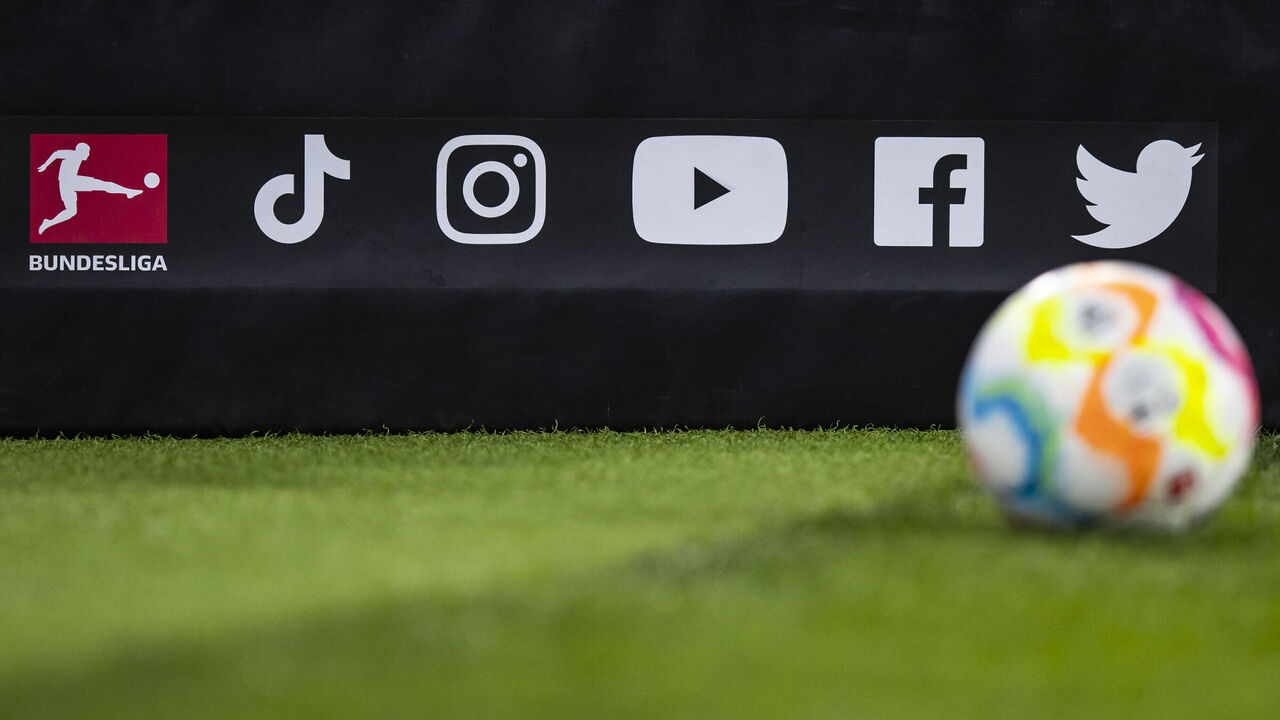
Younger fans also want more than just a formulaic game broadcast. Google research showed 74% of survey respondents interested in sports visit YouTube several times a week. And the value of that content is poised to significantly increase. A Washington Post story used Two Circles data to show short-form video sports content is predicted to increase in value by more than 100% in the next year. In contrast, live TV viewing rights are only expected to increase in value by 18.7%.
Leagues also are leaning more heavily on non-TV metrics to measure engagement success, with online external data sources, like social media, increasingly serving as the north star. The 2020 NBA playoffs - played in a bubble during the COVID-19 pandemic - averaged 3.04 million viewers, according to Sports Media Watch. That's a paltry total compared to the social media views for the year, which the Washington Post reported at 13.2 billion.
Gen Z also doesn't merely want to watch, they want to actively participate. For leagues, harnessing this involves finding ways to bring the game directly to fans. "There are a lot of barriers that might keep kids from participating in our game," said Andrew Ference, a former NHL player who now works for the league as the director of social impact, growth and fan development. "Everything from the cost of equipment, to access to ice, scheduling, pressure from coaches, parents, not having a family history of being involved in hockey." Fan development begins young, so Ference has launched an initiative called NHL Street to expose kids to the game in a low-stakes environment through street hockey.
"We want someone who isn't involved in hockey, doesn't know anything about the culture of ice hockey or know what it's 'supposed to be like,' to have a blank canvas and make the game whatever they want it to be," he said.
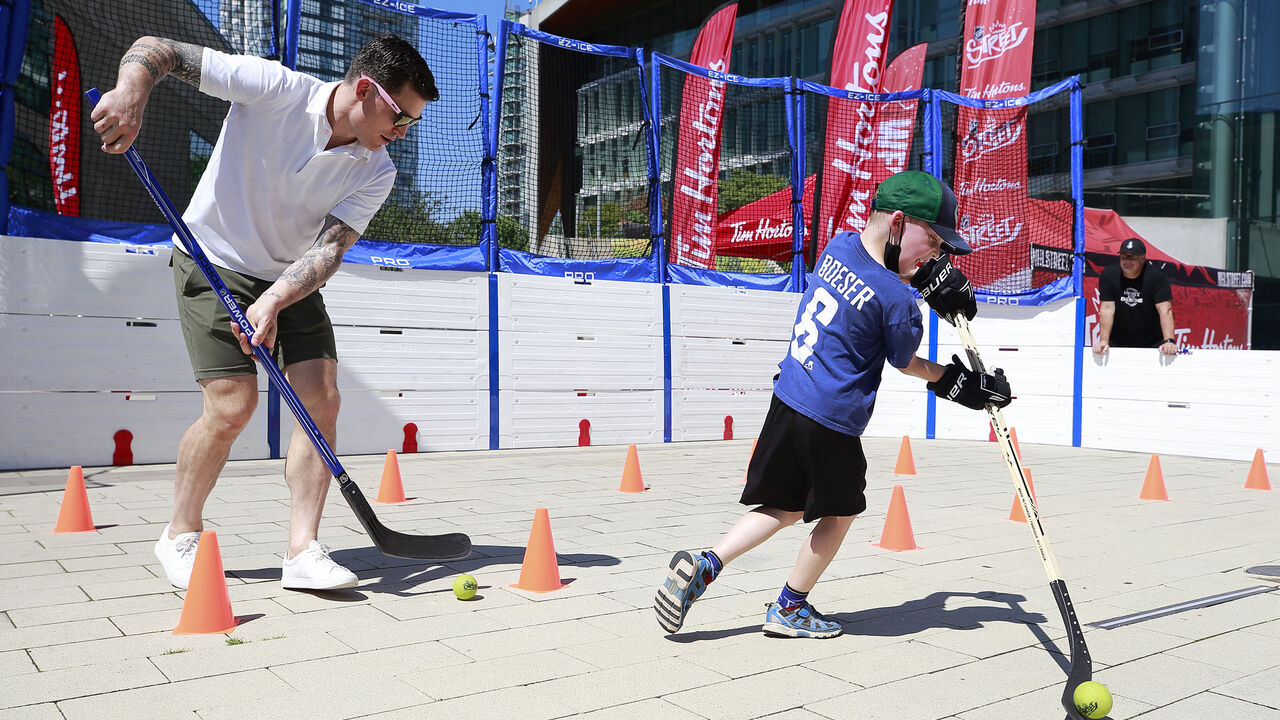
As fans, they want to connect with their favorite athletes, prioritizing personal connections, interactivity, and the ability to shape the narrative surrounding their teams.
That's where social media and video gaming play a significant role. The NBA is ahead of the game in this area. With 40% of the NBA's core fan base under the age of 35, they have a heightened interest in capturing the attention of Gen Z. The league now has over 285 million followers across the major social media platforms. That's more than the other U.S. leagues combined.
And the NBA is encouraging active participation in another way: by acknowledging Gen Z's desire to align with brands, athletes, and teams that are representative of their social and environmental beliefs. They've led the charge in empowering athletes to take a stand on important issues and actively contribute to social change. With Gen Z being a highly values-driven cohort, this is essential to connecting with the younger crowd.
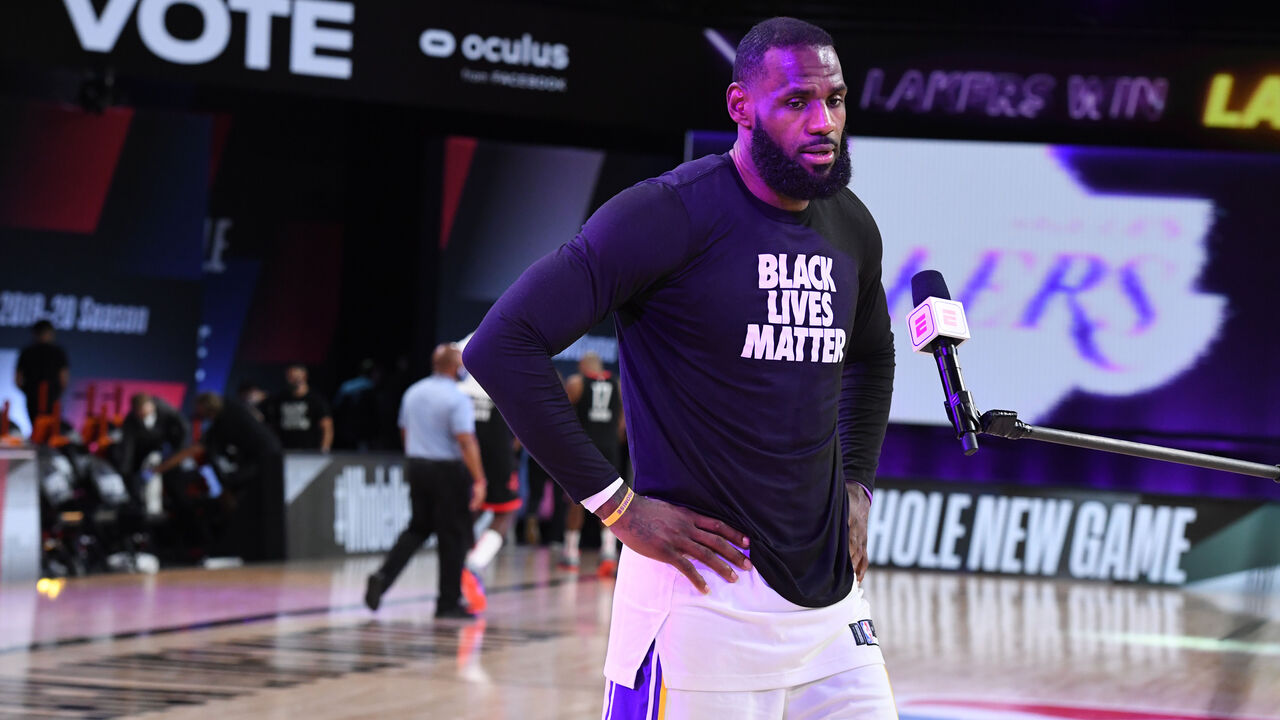
Lali Toor, whose network of South Asian hockey players, Apna Hockey, hosts regular hockey camps for young athletes across North America, sees this first hand with the kids he works with.
"The kids, and even the parents, gravitate toward sports that are accessible, yes, but also those that have outspoken leaders," he said. "When you look at the NBA and you look at leaders like LeBron James, him and his team want to grow the game, they want to make sure that there's no barriers, no racial barriers. The athletes that are garnering the most attention are the ones that embody another aspect of growing the game."
And to Toor's point, the available data seems to support what he's noticing on the ground. Fifty-three percent of the Gen Z respondents to Morning Consult's survey said they were either "avid" or "casual" fans of the NFL. The NBA came in second with 47% saying the same thing, next was college football at 41%, then MLB at 35%, college basketball 34%, and esports at 33%. The NHL was only above MLS with 25% of Gen Z respondents saying they were avid or casual fans - MLS earned 16% of the audience.
While some athletes might not feel comfortable leaning into their personality to promote the game, Toor says leagues and teams can do some of the heavy lifting here. He's been working with some NHL teams to facilitate cultural nights focused on bringing more fans into the arena. "I see multi-generational families coming out to these nights, which is the key thing," he explained. "You see elders come with their kids, and their grandkids."
Morning Consult data confirms these nights are a big win with Gen Z. While only 23% of Baby Boomers surveyed said they had interest in attending a team's cultural night, 69% of Gen Zers said they did. With only one in two Gen Zers having attended a live sporting event, this could be a crucial strategy to get them out to games and build their fandom.
And Gen Z is causing one more shift on the horizon - not merely how we consume sports, but what sports we consume.
For decades, football has been the seemingly unshakeable fan favorite among North American sports fans. But that could start changing. The same Kantar survey above found that today, while 42% of all sports fans follow the NBA, a majority of Gen Zers - 58% - follow it. And it's not just the NBA they like. They'll watch college hoops, too. While 35% of general sports fans watch NCAA men’s basketball, 41% of Gen Zers do.
"I firmly believe that NFL football will remain the top sport in the States for years to come. But, with that said, basketball is certainly growing in popularity," Burns said.
In Burns' eyes, a lot of that has to do with online presence. "Basketball in general is sort of a perfect sport, when it comes to social and digital and highlights," he explained. The NBA has leaned into what Burns called the "game after the game."
"The players in the league are so active on social (media). And there are so many storylines that come through that are not limited to what's going on with the game itself," he said, citing as an example The Draymond Green Show, hosted by the current power forward for the Golden State Warriors. He contrasted that with the NHL. "In hockey, I don't even know if that would occur. I feel like that would be so taboo," he said.

Basketball stars also figure highest amongst Gen Z's favorite athletes. Morning Consult data shows LeBron James and Steph Curry are tied for favorite athletes in Gen Z's eyes, both with net favorability ratings of 41. And NBA stars made up six of the athletes on the list's top 10.
Gen Z is the first generation to never know a life without the internet and most can barely remember a time before smartphones. They're doing things differently, and the changes they're creating are already disrupting the landscape of pro sports as we know it.
Jolene Latimer is a video producer and feature writer at theScore
Copyright © 2023 Score Media Ventures Inc. All rights reserved. Certain content reproduced under license.
NHL Morning Coffee Headlines – June 7, 2023
Winners and Losers of the Provorov 3-Team Trade
Dan and Sat break down the big trade between the Blue Jackets, Flyers, and Kings today. Also, hear from Irfaan Gaffar of The Fourth Period on the trade, The Stanley Cup Final, and more. Plus, Charlie O'Connor of The Athletic stops by to discuss the Flyers side of the deal.
This podcast was produced by Josh Elliott-Wolfe.
The views and opinions expressed in this podcast are those of the hosts and guests and do not necessarily reflect the position of Rogers Media Inc. or any affiliate.
The views and opinions expressed in this podcast are those of the hosts and guests and do not necessarily reflect the position of Rogers Media Inc. or any affiliate.
Trade grades: Evaluating the 3-way deal that sent Provorov to Jackets
Trades during the Stanley Cup Final are fairly rare, and ones involving notable players are even more infrequent. But that's what the Philadelphia Flyers, Columbus Blue Jackets, and Los Angeles Kings pulled off Tuesday.
The Flyers dealt defenseman Ivan Provorov to the Columbus Blue Jackets in a swap also involving the Los Angeles Kings. Six players and three draft picks changed places in total, with some salary retention thrown in to balance it out.
The Blue Jackets came away with Provorov and no additional assets. The Kings sent goaltender Cal Petersen, blue-liner Sean Walker, AHL rearguard Helge Grans, and a 2024 second-round pick to the Flyers, who also landed a first-rounder (22nd overall) this year and a conditional second-rounder next year from Columbus.
Los Angeles is retaining 30% of Provorov's $6.75-million cap hit (leaving the $4.725 million), and the Flyers sent the Kings defenseman Kevin Connauton and farmhand forward Hayden Hodgson.
Here's how we believe each of the three teams fared in the trade:
Flyers
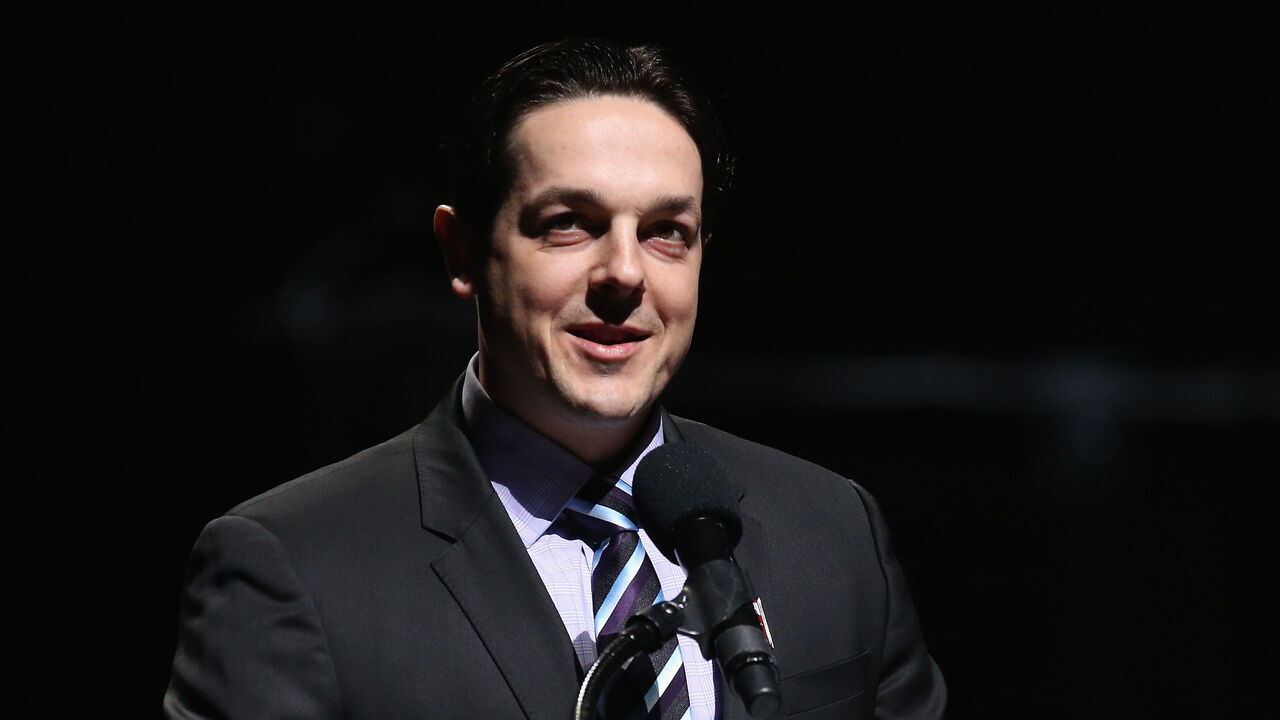
There are two ways to look at a trade involving this many pieces: Quantity, and quality. From a quantity perspective, Philadelphia unquestionably fared well. The Flyers hauled in three decently situated draft picks, a pair of defensemen, and Petersen for depth in goal.
Gone from the organization are Provorov, Connauton, and Hodgson. They jettisoned Provorov's entire $6.75-million contract through 2024-25 as well as Connauton and Hodgson's pacts ($762,500 and $800,000, respectively) through next season. They took back Petersen ($5 million), Walker ($2.65 million), and Grans ($847,500). But aside from some key pending free agents they need to sign, cap space isn't a major concern for Philadelphia at the moment.
So how does it look for the Flyers quality-wise? Provorov's play declined last season, as the 26-year-old played all 82 games but collected only 27 points, his second-lowest total over a full campaign since he entered the league in 2016-17. His 23:01 of average ice time was his lowest since that rookie campaign, and he authored subpar underlying numbers as well.
Petersen struggled mightily in 2022-23, but he could benefit from a change of scenery, particularly on a team with lower expectations. Remember, Flyers No. 1 netminder Carter Hart had an atrocious 2021 season, but his last two have been better.
The Flyers are rebuilding, as general manager Daniel Briere said following the move Tuesday. Provorov's contract wasn't ideal for a rebuilding club, and they got numerous assets in return. None of the picks are particularly high, but the upcoming draft is a deep one that could still yield talent outside the top 16.
So any way you look at it, it's clear Briere and new Flyers president of hockey operations Keith Jones won the trade and helped the club position itself for improvement in the future.
Grade: A
Blue Jackets
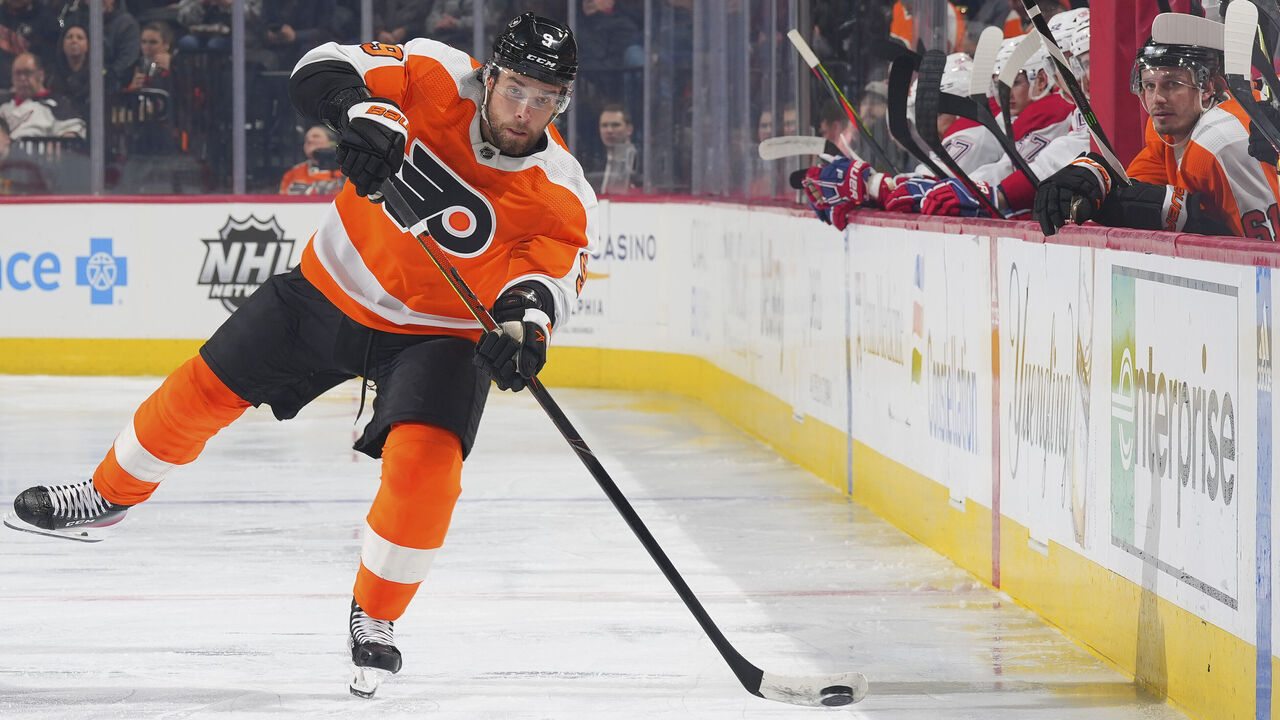
The Blue Jackets are clearly looking to be competitive next season with the reported hiring of Mike Babcock as head coach, and they reinforced a putrid blue line with the addition of Provorov.
Provorov certainly struggled with the Flyers last season - who didn’t? - but he’s only a season removed from a 7.0 expected goals above replacement campaign. He hasn’t been a complete dud over his career, but rather a player who’s played higher in the lineup than he probably should.
After playing some of the toughest minutes in the league with Philadelphia, Provorov’s workload should be softened in Columbus. The Blue Jackets shouldn’t feel the need to force Provorov into a top pairing role with a sub-$5-million cap hit. It’s reasonable to expect his results to improve should he split the top assignments with a returning Zach Werenski, something that could be mutually beneficial to both players.
GM Jarmo Kekalainen noted Provorov’s durability, an element that shouldn’t be overlooked. He’s missed just three games in his seven-year NHL career. Conversely, Werenski hasn’t played a full campaign since 2018-19, and Columbus only had two blue-liners play 70 or more games this season.
Provorov’s been around for a long time, but he’s still only 26 years old. Columbus doesn’t commit significant cap space in the trade, either, with Provorov coming into town at just $4.725 million for two seasons thanks to Los Angeles’ retention.
The Blue Jackets have among the best prospect pools in hockey, so giving up the 22nd overall pick and a future second-rounder doesn’t hurt as much as it might for other teams.
The trade is a calculated risk that helps the Blue Jackets immediately, even if they’re a ways from contending. Columbus gets a second-pairing guy at a second-pairing cap hit for the acquisition cost of a second-pairing defenseman. As a team in desperate need of positivity on the ice, even if its aspect of the three-way deal is the lowest grade for us, it’s a solid gamble.
Grade: B
Kings

This trade is addition by subtraction for the Kings.
Connauton and Hodgson - the two assets acquired by Los Angeles in the deal - are almost certainly bound for the AHL's Ontario Reign. Instead, the Kings get a positive grade here for the relatively minimal price paid to clear a notable amount of cap space.
Even while retaining $2.025 million of Provorov’s contract, Los Angeles frees up $5.625 million for 2023-24 by shipping Petersen and Walker to Philadelphia. The Kings already have maneuverability heading into the summer, but this move gives them the room to retain both Vladislav Gavrikov and Joonas Korpisalo, in addition to the impending raise required for Gabe Vilardi.
To shed that much cap, Los Angeles only had to part with a 2024 second-round pick and Grans, a young, 6-foot-3 defenseman who was drafted fairly high, but who regressed in his second season in the AHL.
Walker is an NHL-caliber defenseman, but he was clearly the odd man out on the Kings’ incredibly deep right side. Los Angeles still has Drew Doughty, Matt Roy, Sean Durzi, Jordan Spence, and Brandt Clarke as right-handed options already under contract for 2023-24.
Creating that much cap space for such a little cost is quality business by Rob Blake and a promising start to the offseason for the Kings.
Grade: B+
Copyright © 2023 Score Media Ventures Inc. All rights reserved. Certain content reproduced under license.
Flyers Trade Provorov in Three-Team Deal
Report: Provorov traded to Blue Jackets in 3-way deal with Flyers, Kings
The Philadelphia Flyers are trading defenseman Ivan Provorov to the Columbus Blue Jackets in a three-team deal that also includes the Los Angeles Kings, reports Sportsnet's Elliotte Friedman.
The Kings are moving goaltender Cal Petersen as well as defenseman Sean Walker to the Flyers and retaining a portion of Provorov's $6.75-million salary, according to ESPN's Kevin Weekes. Philadelphia will also receive first- and second-round picks from Columbus, per Sportsnet's Jeff Marek.
More to come.
Copyright © 2023 Score Media Ventures Inc. All rights reserved. Certain content reproduced under license.
Maurice has ‘complete faith’ in Bobrovsky entering Game 3
Florida Panthers head coach Paul Maurice remains confident in Sergei Bobrovsky despite the goaltender giving up four goals on 13 shots during Monday's 7-2 loss to the Vegas Golden Knights in Game 2.
"I thought Sergei was like our team," Maurice said of Bobrovsky in Game 2, per Sportsnet's Luke Fox.
"I thought we were just slightly off it. We didn't give him a chance. He didn't maybe quiet the game early for us when we needed it quieted by the goaltender. But I got complete faith in what he'll be able to do in Game 3."
Bobrovsky has been pivotal to the Panthers' playoff run. Despite his Cup Final struggles, he still owns a sparkling .925 save percentage in 16 appearances this postseason.
Maurice dismissed the notion that Bobrovsky is dealing with fatigue from the grueling playoff run.
"If we were playing tomorrow, or two days as we are, he'll have a game plan for it," Maurice said. "This isn't a fatigue thing. We've been off the ice for a block. He was very, very good in Game 1."
Bobrovksy's teammate Sam Bennett gave him a vote of confidence, too.
"He's been our best player all playoffs," the forward said after the loss, per ESPN's Ryan Clark. "We have total belief in him. We have to do a better job helping him out and not give up so many grade A chances on him. There's no issue there. We have the utmost confidence in him."
Alex Lyon, who began the playoffs as the Panthers' starter, came in to replace Bobrovsky in Game 2 but didn't fare much better, allowing three goals on 15 shots.
Bobrovsky, 34, put together a pedestrian 2022-23 regular season with a .901 save percentage in 50 games.
Copyright © 2023 Score Media Ventures Inc. All rights reserved. Certain content reproduced under license.
4 battlegrounds to monitor as Stanley Cup Final shifts to Florida
The Vegas Golden Knights, up 2-0 in the Stanley Cup Final after a 7-2 beatdown of the Florida Panthers on Monday, are two wins away from their first Stanley Cup. Home-ice advantage shifts to the Panthers, though, with Game 3 set for Thursday night in Sunrise. Here are four pivotal battlegrounds to monitor.
Tkachuk line vs. Hague-Whitecloud

It's never a positive sign when you punch a rival in the face multiple times and get nothing but smirking and a viral TV moment in response.
That's exactly what happened in Game 1 as Panthers superstar Matthew Tkachuk and linemate Sam Bennett attempted (and failed) to rattle Golden Knights blue-liner Nicolas Hague in one of the series' many post-whistle scrums.
It's also never a positive sign when two games haven't produced much of a highlight reel despite what, on paper, is a winnable head-to-head matchup - Florida's top offensive line of Bennett between Tkachuk and Nick Cousins versus Vegas' least-experienced pairing of Hague and Zach Whitecloud.
Tkachuk has been on the ice for one goal for and one goal against - as well as 20 shot attempts for and 17 attempts against - in 15 total five-on-five minutes opposite Hague-Whitecloud. The Hart Trophy finalist's defensive-zone turnover led directly to Vegas' 4-2 goal in Game 1, and while he did score in Game 2, it was a garbage-time tally that he barely celebrated.
A Conn Smythe Trophy contender coming into the Cup Final, Tkachuk's been neutralized. The series will be over in four games if he's unable to break through in a meaningful way. The Panthers tend to go as Tkachuk goes.
Staying out of the penalty box would be a good starting point. After being relatively disciplined during the first three rounds of the postseason (24 total penalty minutes), Tkachuk's already racked up 36 PIMs against Vegas thanks to three minors - all roughing calls - and three misconducts. Despite playing a physical brand of hockey, the 6-foot-6, 230-pound Hague and 6-foot-2, 207-pound Whitecloud have largely avoided the box. Whitecloud's misconduct late in Monday's blowout is the duo's lone infraction. They're dialed in.
Panthers' goalies vs. netfront traffic
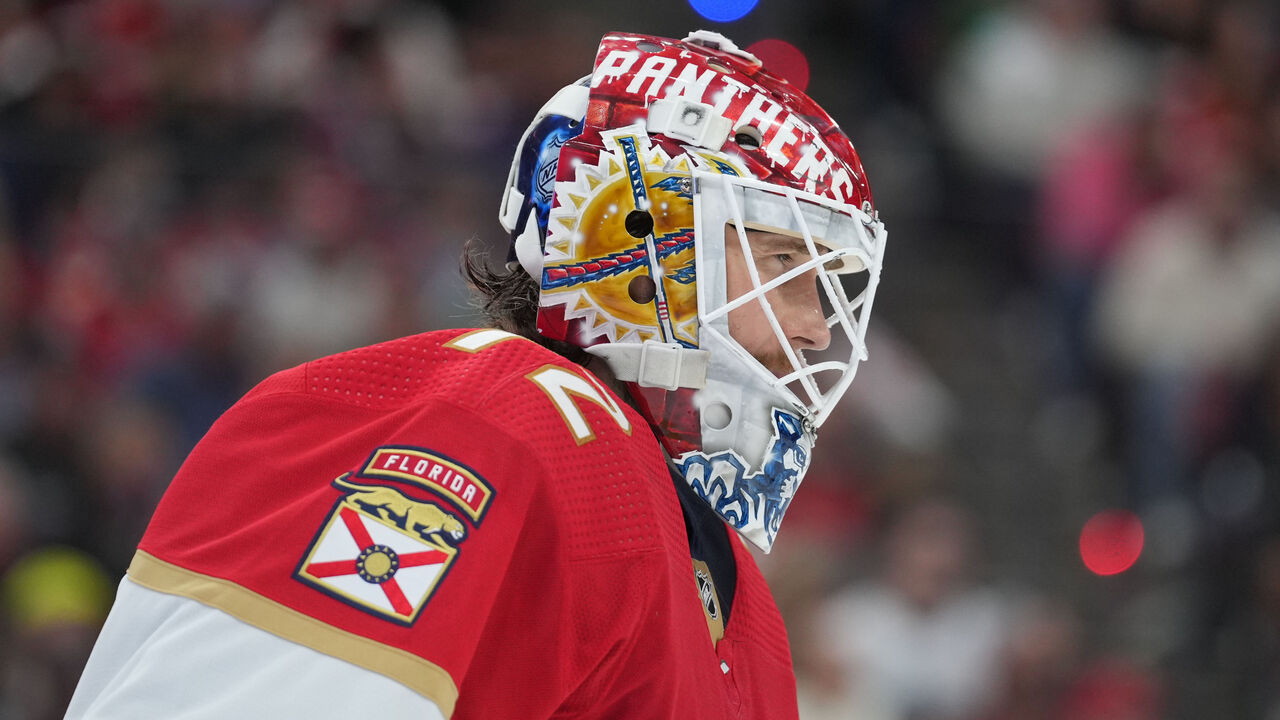
Two-time Vezina Trophy winner Sergei Bobrovsky allowed four goals on 33 shots in Game 1, then four on 13 shots in the first half of Game 2. In relief, journeyman Alex Lyon surrendered three on 13 shots as Florida unraveled.
You don't have to dig up advanced statistics to conclude that Florida's goaltending needs to be significantly better. (Though Game 3's starter hasn't been named, expect Bobrovsky to take the net back.)
That said, the goalies don't deserve all the blame. In fact, it's the skaters in front of them who should be targeted by Panthers coaches in video sessions. Florida's defensive-zone coverage was subpar in the opener and downright horrendous in the second game - poor gaps off the rush, tentative pressure on the walls, and too much puck-watching, to name just a few concerning trends for a club that previously outlasted the attacks of Boston, Toronto, and Carolina.
The netfront area needs to be cleaned up ASAP. Bobrovsky and Lyon were screened on six of 11 non-empty-net goals. Amazingly, on four of those six screened goals, it was a Panther, not a Golden Knight, clogging up the shooting lane. The other two goals featured an even worse save-making environment of one Panther and one Golden Knight in front of the goalie.
There's sacrificing the body to block a shot, and then there's making life more difficult for your goalie. Vegas is doing the former (36-22 advantage in blocked shots despite controlling play), while Florida is doing the latter to an extreme.
Vegas' stars vs. Florida's agitation
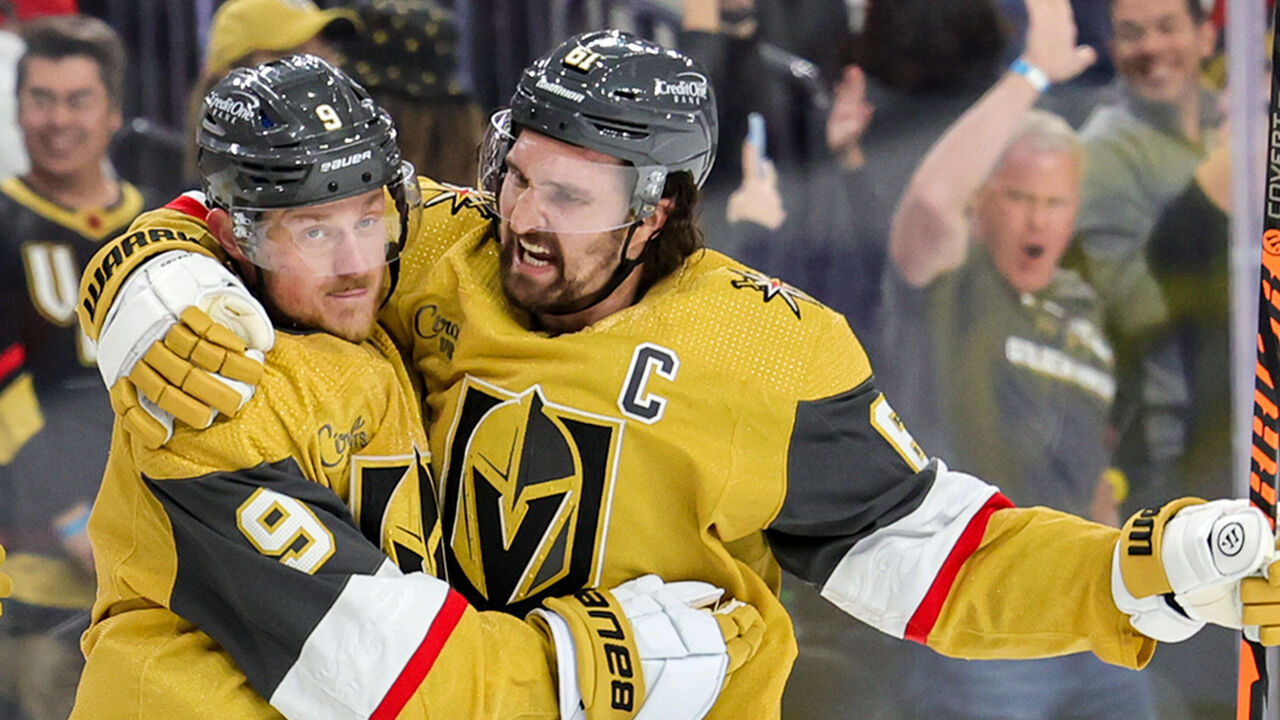
The Golden Knights are a handful at even strength. An elite transition squad that often sustains pressure after the original scoring chance, they currently boast a five-on-five goal differential of plus-30 in the playoffs (56-26).
Let that sink in: Vegas, in 19 games against the NHL's best, is up 30 goals!
And while Vegas' 21.5% power play ranks fifth out of the nine teams with at least 30 opportunities this postseason, Florida cannot keep giving its opponent so many reps. The Golden Knights are generally uninterested in the extracurricular activities between whistles and the referees are clearly not afraid to penalize troublemakers. So, the Panthers, who've been shorthanded 11 times so far, must find the middle ground between agitation and discipline.
The Ivan Barbashev-Jack Eichel-Jonathan Marchessault line, which makes up 60% of Vegas' top power-play unit, has been deadly this series - and the rest of the run - regardless of game state. Eichel collected his fourth assist in two games Monday following a clean but thunderous hit by Tkachuk. Barbashev, who's issued three monstrous hits of his own, earned primary helpers on Game 1's winning goal and Game 2's 2-0 marker. Triggerman Marchessault has padded his Conn Smythe case by bagging three goals and adding an assist.
Penalty killing was a popular talking point ahead of the Cup Final - rightfully so, considering recent history (71.2% playoff kill rate for Florida, 63.0% for Vegas). The Golden Knights have been perfect through two games.
Panthers' depth vs. injury/fatigue
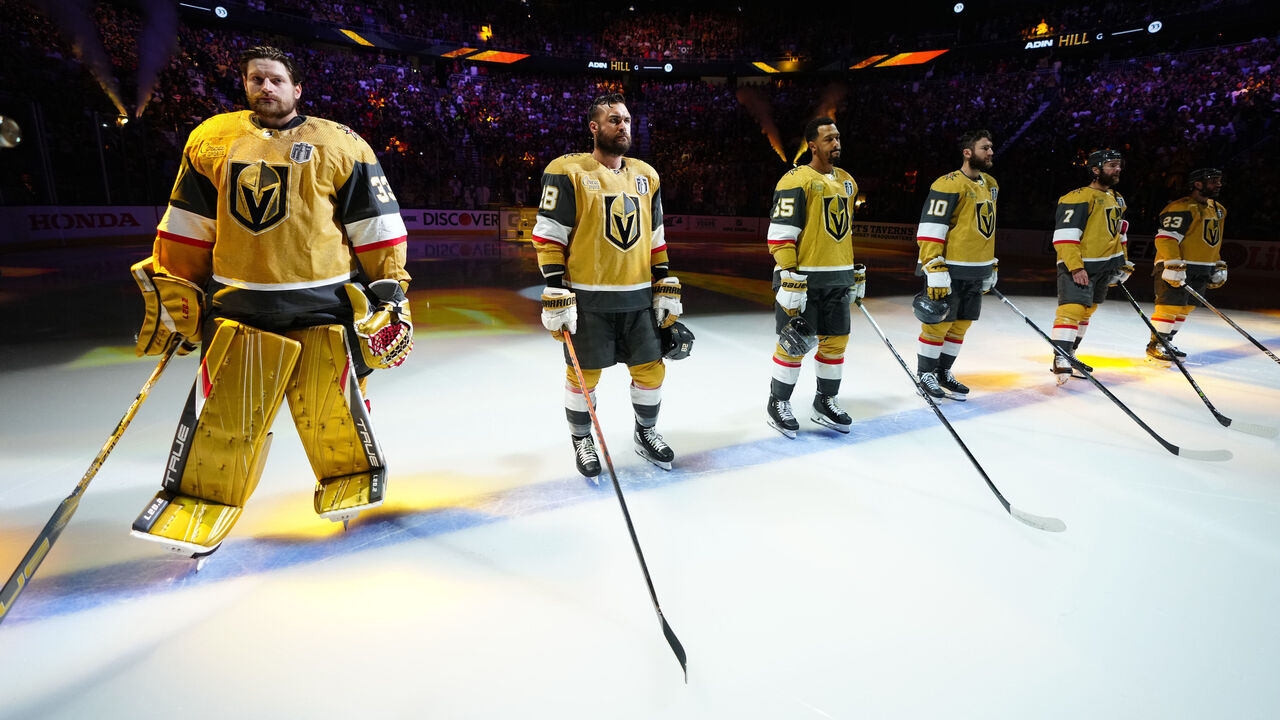
Florida's in trouble. The obvious reason: The Panthers are down 2-0 in a best-of-seven series and the second game was a gong show. The less obvious reason: The toll of a long, rough-and-tumble postseason seems to be catching up to them.
Catalysts Bobrovsky and Tkachuk had their worst showings of the run in Game 2; is this the beginning of the end for two terrific individual performances? Key defensemen Brandon Montour and Gustav Forsling have logged 70 and 50 more playoff minutes, respectively, than any Golden Knights skater; do they have enough gas in the tank to contribute to a four-win comeback?
Panthers winger Eetu Luostarinen has missed the first two games and blue-liner Radko Gudas left Game 2. Neither is guaranteed to draw back into the series, which may mean extra ice time for seventh defenseman Casey Fitzgerald and 12th forward Zac Dalpe, who was scratched Monday as head coach Paul Maurice opted for 11 forwards and seven defensemen. To put it mildly, that's not an ideal scenario.
The Golden Knights, with a buzzsaw of a fourth line featuring Nicolas Roy between Keegan Kolesar and William Carrier, was the deeper team at full health. With the Panthers seemingly fighting it, that gap is even wider.
John Matisz is theScore's senior NHL writer. Follow John on Twitter (@MatiszJohn) or contact him via email (john.matisz@thescore.com).
Copyright © 2023 Score Media Ventures Inc. All rights reserved. Certain content reproduced under license.
Hill relishing breakout postseason: ‘Most fun I’ve ever had playing hockey’
Vegas Golden Knights goaltender Adin Hill was a long shot to make an impact these playoffs, but he's soaking in the spotlight after carrying his club within two wins of the Stanley Cup.
"It's probably been the most fun I've ever had playing hockey," Hill said after Monday's Game 2 victory, according to Vince Sapienza of FOX5 Las Vegas. "Just enjoying it, cherishing every day. ... It's been awesome being part of this journey with this team."
Hill took over between the pipes after Laurent Brossoit was injured in Game 3 of the second round against the Edmonton Oilers. He's since thrust himself into the Conn Smythe conversation with a 9-3 record, .937 save percentage, and two shutouts in his first taste of the NHL postseason.
The 27-year-old has already produced multiple signature moments in the Stanley Cup Final. Hill sent the Vegas crowd into a tizzy in Game 1 with an unforgettable stick save, then drew even more affection Monday night when he got into it with Florida Panthers star Matthew Tkachuk.
Adin Hill and Matthew Tkachuk going at it 👀 pic.twitter.com/tkUKrAzIhF
— Gino Hard (@GinoHard_) June 6, 2023
"Staying calm and neutral is good, but if guys are coming to the net and stuff, you have to stand your own ground," Hill said. "It shows your 'D' that they don't always have to do it for you. I like our team all year, we've been disciplined, but we stand up for each other."
The Golden Knights acquired Hill from the San Jose Sharks for a fourth-round pick in August. Vegas sought extra depth in the crease after ruling Robin Lehner out for the season due to hip surgery.
Hill started 27 games in the regular season - a career high - and went 16-7-1 with a .915 save percentage.
He'll become an unrestricted free agent on July 1.
Copyright © 2023 Score Media Ventures Inc. All rights reserved. Certain content reproduced under license.